
The Fugitive Slave Act or Fugitive Slave Law was a law passed by the 31st United States Congress on September 18, 1850, as part of the Compromise of 1850 between Southern interests in slavery and Northern Free-Soilers.

Eleutherian College, founded as Eleutherian Institute in 1848, was a school founded by local anti-slavery Baptists at Lancaster in Jefferson County. The institute's name comes from the Greek word eleutheros, meaning "freedom and equality." The school admitted students without regard to ethnicity or gender, including freed and fugitive slaves. Its first classes began offering secondary school instruction on November 27, 1848. The school was renamed Eleutherian College in 1854, when it began offering college-level coursework. It closed in 1874 and its main building was used for a private normal school and then a public high school. It is now home to a non-profit group. The school was the second college in the United States west of the Allegheny Mountains and the first in Indiana to provide education to students of different colors. The restored three-story stone chapel and classroom building was constructed between 1853 and 1856 and presently serves as a local history museum. The school was listed on the National Register of Historic Places in 1993 and declared a National Historic Landmark in 1997,
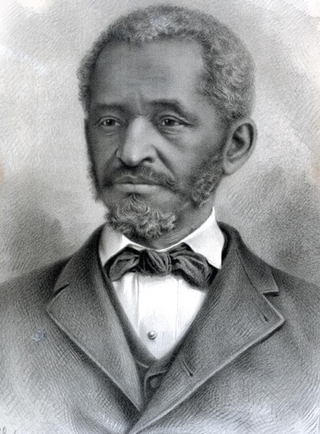
Lewis Hayden escaped slavery in Kentucky with his family and reached Canada. He established a school for African Americans before moving to Boston, Massachusetts. There he became an abolitionist, lecturer, businessman, and politician. Before the American Civil War, he and his wife Harriet Hayden aided numerous fugitive slaves on the Underground Railroad, often sheltering them at their house.
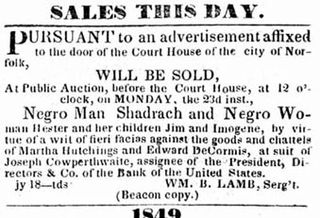
Shadrach Minkins was an African-American fugitive slave from Virginia who escaped in 1850 and reached Boston. He also used the pseudonyms Frederick Wilkins and Frederick Jenkins. He is known for being freed from a courtroom in Boston after being captured by United States marshals under the Fugitive Slave Act of 1850. Members of the Boston Vigilance Committee freed and hid him, helping him get to Canada via the Underground Railroad. Minkins settled in Montreal, where he raised a family. Two men were prosecuted in Boston for helping free him, but they were acquitted by the jury.

The Boston Vigilance Committee (1841–1861) was an abolitionist organization formed in Boston, Massachusetts, to protect escaped slaves from being kidnapped and returned to slavery in the South. The Committee aided hundreds of escapees, most of whom arrived as stowaways on coastal trading vessels and stayed a short time before moving on to Canada or England. Notably, members of the Committee provided legal and other aid to George Latimer, Ellen and William Craft, Shadrach Minkins, Thomas Sims, and Anthony Burns.

The Owen Lovejoy House is a historic house museum on East Peru Street in Princeton, Illinois. Built in 1838, it was for many years home to Owen Lovejoy (1811–1864), a prominent abolitionist and congressman. Lovejoy, the brother of martyred abolitionist, Elijah Lovejoy, was an open operator of shelter and support on the Underground Railroad, and his house contains a concealed compartment in which escaped slaves could be hidden. It was declared a National Historic Landmark in 1997. It is open seasonally or by appointment for tours.
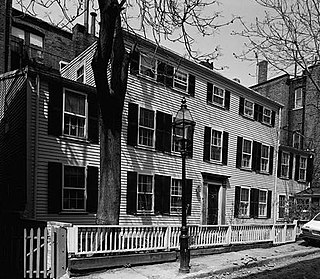
The William C. Nell House, now a private residence, was a boarding home located in 3 Smith Court in the Beacon Hill neighbourhood of Boston, Massachusetts, opposite the former African Meeting House, now the Museum of African American History.

The Nathan and Mary (Polly) Johnson properties are a National Historic Landmark at 17–19 and 21 Seventh Street in New Bedford, Massachusetts. Originally the building consisted of two structures, one dating to the 1820s and an 1857 house joined with the older one shortly after construction. They have since been restored and now house the New Bedford Historical Society. The two properties are significant for their association with leading members of the abolitionist movement in Massachusetts, and as the only surviving residence in New Bedford of Frederick Douglass. Nathan and Polly Johnson were free African-Americans who are known to have sheltered escaped slaves using the Underground Railroad from 1822 on. Both were also successful in local business; Nathan as a caterer and Polly as a confectioner.
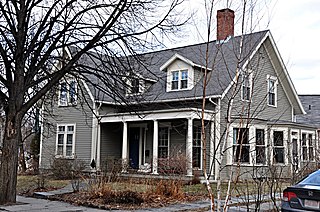
The William Ingersoll Bowditch House is a historic house at 9 Toxteth Street in Brookline, Massachusetts. It is a good example of vernacular Gothic and Greek Revival architecture, built c. 1844-45 as part of one of Brookline's earliest formal residential subdivisions. William Bowditch, the first owner, was an active abolitionist who sheltered fugitive slaves as part of the Underground Railroad, and was a member of the Boston Vigilance Committee. The house was listed on the National Register of Historic Places on October 17, 1985.

Robert Morris was one of the first African-American attorneys in the United States, and was called "the first really successful colored lawyer in America."

John J. Smith House was the home of John J. Smith from 1878 to 1893. Smith was an African American abolitionist, Underground Railroad contributor and politician, including three terms as a member of the Massachusetts House of Representatives. He also played a key role in rescuing Shadrach Minkins from federal custody, along with Lewis Hayden and others.

John James Smith was a barber shop owner, abolitionist, a three-term Massachusetts state representative, and one of the first African-American members of the Boston Common Council. A Republican, he served three terms in the Massachusetts House of Representatives. He was born in Richmond Virginia. He took part in the California Gold Rush.
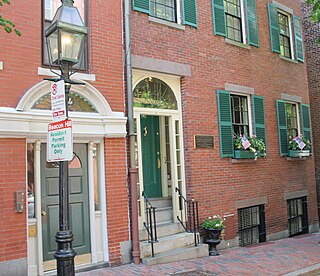
Lewis and Harriet Hayden House was the home of African-American abolitionists who had escaped from slavery in Kentucky; it is located in Beacon Hill, Boston. They maintained the home as a stop on the Underground Railroad, and the Haydens were visited by Harriet Beecher Stowe as research for her book, Uncle Tom's Cabin (1852). Lewis Hayden was an important leader in the African-American community of Boston; in addition, he lectured as an abolitionist and was a member of the Boston Vigilance Committee, which resisted the Fugitive Slave Act of 1850.
Nathaniel Booth was an African American who escaped from slavery.

The Twelfth Baptist Church is a historic church in the Roxbury neighborhood of Boston, Massachusetts. Established in 1840, it is the oldest direct descendant of the First Independent Baptist Church in Beacon Hill. Notable members have included abolitionists such as Lewis Hayden and Rev. Leonard Grimes, the historian George Washington Williams, the artist Edward Mitchell Bannister, abolitionist and entrepreneur Christiana Carteaux, pioneering educator Wilhelmina Crosson, and civil rights movement leader Dr. Martin Luther King Jr.

Samuel Edmund Sewall (1799–1888) was an American lawyer, abolitionist, and suffragist. He co-founded the Massachusetts Anti-Slavery Society, lent his legal expertise to the Underground Railroad, and served a term in the Massachusetts Senate as a Free-Soiler.

The New England Freedom Association was an organization founded by African Americans in Boston for the purpose of assisting fugitive slaves.

Ellis Gray Loring was an American attorney, abolitionist, and philanthropist from Boston. He co-founded the New England Anti-Slavery Society, provided legal advice to abolitionists, harbored fugitive slaves in his home, and helped finance the abolitionist newspaper, the Liberator. Loring also mentored Robert Morris, who went on to become one of the first African-American attorneys in the United States.
John P. Coburn (1811–1873) was a 19th-century African-American abolitionist, civil rights activist, tailor and clothier from Boston, Massachusetts. For most of his life, he resided at 2 Phillips Street in Boston's Beacon Hill neighborhood. Coburn was one of the wealthiest African Americans in Boston of his time. His property on the North Slope of Beacon Hill had the third highest real property value in an 1850 census. Coburn was heavily involved in abolition-related work within his community, specifically work related to the New England Freedom Association and the Massasoit Guards.
Elizabeth Cook Riley was an African-American Bostonian abolitionist who aided in the escape of fugitive slave Shadrach Minkins. She was a member of the committee which raised the first funds towards William Lloyd Garrison's The Liberator, a prominent antislavery newspaper. Afterwards, she was active in the Boston abolitionist community, helping to organize meetings and events.




















